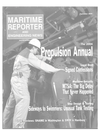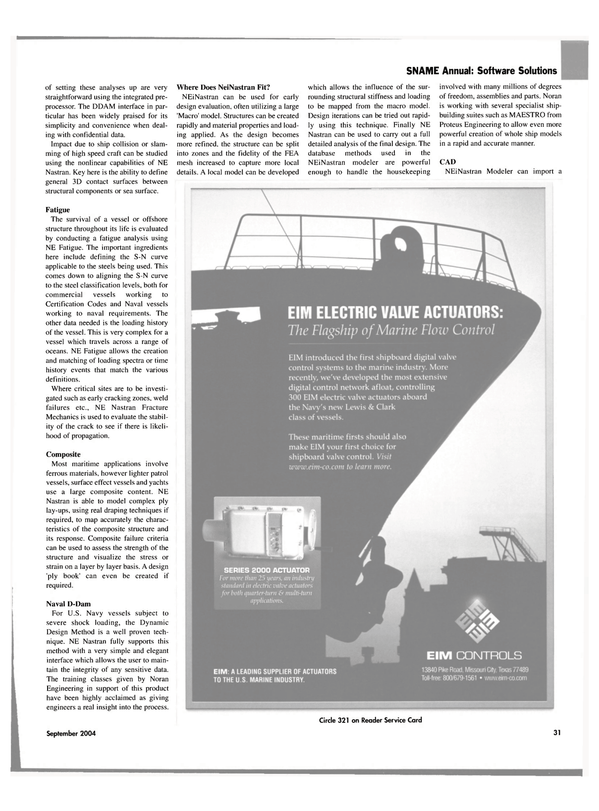
BMT Aims to Improve Vessel Evac
Trials measuring the ship evacuation performance of passengers in conditions including smoke and rolling motion are being conducted as part of a research project led by British Maritime Technology Ltd. (BMT) and co-funded by the European Union. The goal: produce a FIRE-EXIT simulation tool that will equip the marine industry with a ship evacuation, fire and abandonment simulation tool that is a significant improvement over the level of reliability, realism and design utility available from existing systems. The software will enable the design of safer vessels, optimization of ship layout and emergency procedures and will also assist in ensuring that, in the event of a fire, passengers move as quickly and safely as possible to their assigned lifeboat stations.
For the first time a large-scale, smoke-filled test facility capable of dynamic motion superimposed over an angle of heel is being used with volunteer "passengers" for live trials. This follows major enhancements to the Ship Evacuation Behaviour Assessment (SHEBA) facility that provides a uniquely realistic insight into the evacuation process. Full-scale abandonment trials are also being conducted in Canada. Volunteers are timed and behaviour videotaped as they escape from muster stations via inflatable slides and vertical chutes as they cross a collection platform and enter life rafts and lifeboats. Model tests have been performed to measure lifeboat launching performance in high sea states. Data collected from these trials is being incorporated within the maritimeEXODUS ship evacuation software and the fire simulation software SMARTFIRE, both of which are developed by the Fire Safety Engineering Group (FSEG) of the University of Greenwich, which is also part of the research consortium.
The FIRE-EXIT consortium also includes the University of Greenwich, AVEVA AB, BMT Fleet Technology Ltd, and the Institute for Ocean Technology at the National Research Council of Canada.
Circle 71 on Reader Service Car
Read BMT Aims to Improve Vessel Evac in Pdf, Flash or Html5 edition of September 2004 Maritime Reporter
Other stories from September 2004 issue
Content
- SSI Concerns Continue page: 5
- Signed Confessions page: 9
- OMI to Pay $4.2M for Waste Oil Dumping page: 14
- NASSCO Delivers Alaskan Frontier page: 17
- Alabama Shipyard to Build Hopper Dredge page: 17
- Merwede Tapped for Navy, Commercial Contracts page: 18
- FBM Babcock Wins U.S. Contract page: 19
- New Vessels from VT Halmatic page: 19
- ABCO Launches Three New Boats page: 20
- IR Generates $64M in Orders page: 24
- Sideways to Swimmers: Unusual Tank Testing page: 26
- Current Uses of FEA in Shipbuilding page: 30
- BMT Aims to Improve Vessel Evac page: 32
- Flensburg Makes its Mark Again page: 36
- SMM 2004: Ready for the World page: 36
- German Shipyards Propose Merger page: 37
- Voith to Exhibit VWT Baut at SIMM page: 37
- Blohm + Voss Repair Wins Business page: 38
- Methane Arctic Benefits from German Technology page: 39
- Becker Kort Rudder Nozzles for Improved Maneuverability page: 40
- Payer Presented Cross of the Order of Merit page: 42
- Xantic: Focus on Integrated Solutions page: 44
- A Benchmark in Electronic Fuel Injection page: 45
- Q&A with Wartsila CTO Matti Kleimola page: 46
- Seacor Crewboats "Eliminators" Some Maintenance Costs page: 49
- (Fuel) Cells of Endeavor page: 50
- Containerships: When Will One Engine Not Be Enough? page: 52
- Most Powerful Common- Rail Engine Passes Test page: 54
- Clean Concept for Brostrom Tankers page: 54
- Canadian Towing Firm Refits for the Future page: 56
- TOR: The Next-Generation Turbocharger page: 57
- Duramax Marine Creates Largest Ever DuraCooler page: 58
- ABS: Large Ship Hull Deflections Impact the Shaft Alignment page: 60
- The Great Maritime Disruption... that Never Happened page: 66
- New Positioning Technique Helps Cut Costs in Deepwater GOM page: 76
- U.S. Ferry Market Prospects Looking Up page: 77
- "Ship Design and Construction" page: 81


